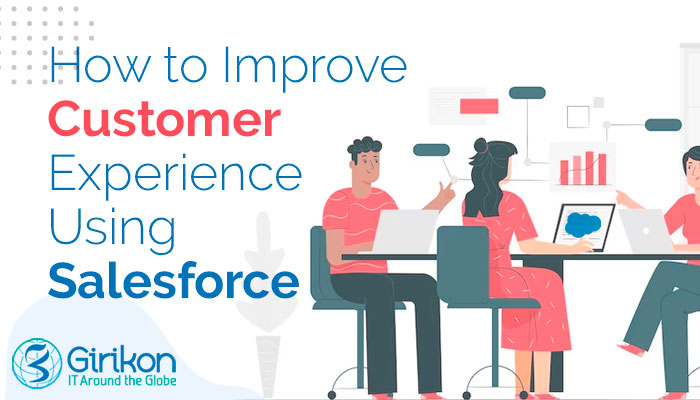How to Improve Customer Experience Using Salesforce?
Customers usually look for prompt responses to their queries. However, in reality, they often have to wait a long time for support because they are not only redirected to different departments but also asked to repeat their information regarding their issue. This situation can be quite frustrating for customers because they consider the company as one entity but feel that the company acts as if its different ‘body parts’ do not have any connection with one another. This common problem arises from the division among companies' marketing, sales, and service team in terms of data systems and workflows.

To avoid poor customer experience, organizations need to ensure that all their customer data are stored in one place. Using an integrated Customer Relation Management (CRM) such as Salesforce Customer 360, data from your marketing, sales, commerce, service, and IT departments can be united and 360-degree views of all customers can be attained. Many Salesforce Consulting Companies can provide organizations with qualified Salesforce Consultants who can assist them in integrating Salesforce Customer 360 with their existing systems seamlessly.
Having achieved a single view of every customer, teams can start making meaningful connections with them in the following ways:
1. Tracking Customers’ Activities
Case Management allows service teams to access and manage customer inquiries and complaints. Having access to a customer’s full details, interaction, and case history, customer service representatives can decide quickly on resolving, assigning a case to a suitable person, or escalating that case so that the customer can receive help as early as possible.
2. Collaborating with different departments
Though having access to customers’ data across channels and departments, members from different teams should not refrain from cooperating if they are unsure of the solutions. Slack, the productivity platform included in Salesforce Customer 360, enables cross-functional teams to share information, knowledge, and updates in real-time, thereby improving the effectiveness of your customer service team and the satisfaction of your customers.
3. Personalizing Customer Communication
Nowadays, customers expect personalization to be more than just having their names in the greetings of an email. They also want to see content and offers relevant to their needs. Salesforce CRM is a gold mine of customer data since it contains information about customers’ website browsing and downloading activities. These data are the key to segmenting customers based on their purchase history or interests so that they can receive the emails they truly need.
4. Automating Communication with Contacts
If a lead or customer has not been in touch with a company for more than six months, there is a higher chance they turn cold. Organizations should focus on nurturing their contacts frequently so that they continue to remember these organizations and find their offerings valuable. Since marketing departments might be too busy to initiate a conversation or respond to customers on a one-on-one basis, several automation tools from Salesforce Marketing Cloud can come in handy. Marketing Cloud’s Journey Builder allows marketing teams to design campaigns that guide customers throughout their journey, Automation Studio helps teams send emails on an hourly, daily, weekly, or monthly basis, while Triggered Sends trigger the sending of emails, such as ‘Thank You’ or ‘Form Submission’ emails, following customers' or leads’ actions.
Conclusion
Since customer acquisition is about 5 to 25 times more expensive than customer retention (depending on your industry), providing existing customers with a satisfactory experience might be the most cost-effective method for a company to remain competitive while generating better revenue. To ensure that your company follows Salesforce Best Practices for top-notch customer experience, get in touch with your local Salesforce Implementation Partners today.
- Apr 25, 2023
